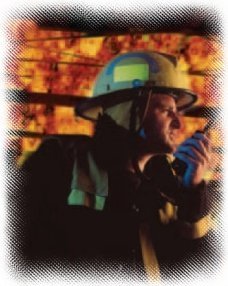Technology & Broadband
PSWAC Follow-Up: Assessment of Future Spectrum and Technology (AFST) (2010–2020)
In August of 2009, NPSTC chartered the Assessment of Future Spectrum and Technology (AFST) Working Group to identify public safety communications requirements for the 10-year period, from 2012 to 2022, and assess the impact on technology and radio spectrum. The Public Safety Communications Assessment, 2012-2022: Technology, Operations, & Spectrum Roadmap provides an overview of public safety communications and emergency operations as they exist now and as they are envisioned to be in the future. This report is a follow up to the Public Safety Wireless Advisory Committee’s (PSWAC) Final Report of September 11, 1996. The PSWAC was established on June 25, 1995, by the Federal Communications Commission (FCC) and National Telecommunications and Information Administration (NTIA) to evaluate the wireless communications needs of local, tribal, state, and federal public safety agencies through the year 2010, identify problems, and recommend possible solutions. NPSTC submits this report and recommendations for improved public safety communications for the consideration of the Commission.
The NPSTC Working Group issued a nationwide questionnaire that collected capability shortfalls across the full range of public safety communications needs. From a series of operational focus group sessions held across the United States, law enforcement, fire/rescue, EMS, and other emergency services personnel were able to provide invaluable insight into their daily operations regarding spectrum needs and broadband data. This information was coupled with a nationwide assessment tool sent out to thousands of public safety agencies across the country. The technologies needed to meet public safety's operational requirements were developed from the above information. Technical information was fed into an internationally accepted spectrum model from the International Telecommunication Union (ITU) to calculate the spectrum needs of first responders.
One of the most urgent operational issues raised in this report relates to how existing public safety mission critical voice communications may be transitioned to the emerging broadband technology. It was very clear that public safety communications managers are extremely concerned over how their executive officers and elected officials will view funding and upgrades of their existing Land Mobile Radio (LMR) systems based on a belief that broadband systems may replace the existing LMR infrastructure in the next few years. This report concluded that while there is a technological potential for mission critical voice to be managed over a broadband network, much work remains to be done to determine if this is the correct long-term solution for public safety communications. As a result, narrowband and broadband spectrum allocations must continue to be made available to public safety agencies. The Public Safety Communications Roadmap is a valuable document, based on extensive research, with many of its recommendations taken directly from public safety first responders. More work remains as the nationwide public safety broadband network is built and technology continues to evolve. The Public Safety Communications Roadmap will prove to be a valuable resource as public safety communications continues to evolve.
Full View






 Connect with NPSTC
Connect with NPSTC